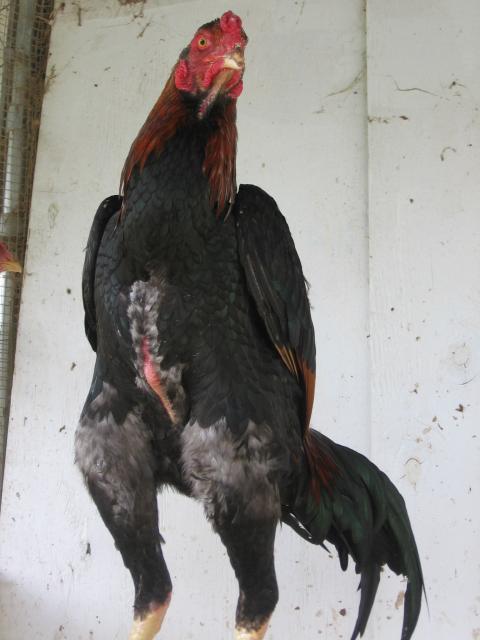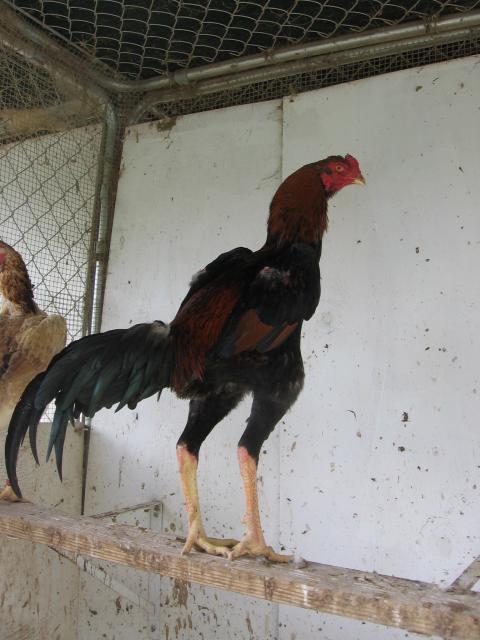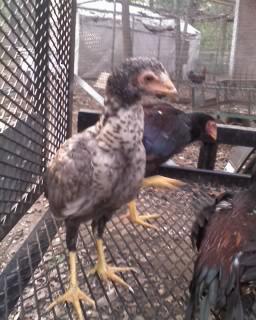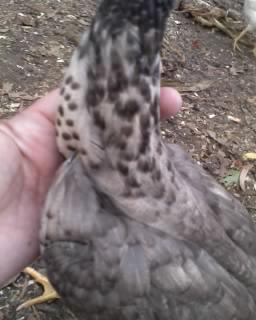Quote:
Here is my take and I agree with everything you have said Saladin.
A lot of times it is a young male that wins. Many of the hard feathered birds are not as slick looking as they mature, the females are usually alright, but the males are usually not as smooth looking. There are exceptions.
We are blessed here in CA as the temperature is very mild compared to other parts of the US and our shows start later, so we have more time to condition birds for show. Our shows run from Oct-March here, with most of the important shows ending in late Feb. Most of the birds here are bred for the Nov-Jan shows
Another blessing we have here is that most of the APA judges out here know the Oriental breeds and are aware of how an Oriental looks as it matures. Many times when we bring in judges from other area's they go right for a Sumatra because that is all they know and generally they are in great condition. We usually have classes of 100+ oriental breeds in the AOSB class which is the largest large fowl class out here. About half the time at our shows Best of Show comes from the AOSB class.
The rest of it hinges on the abilities of the exhibitor to condition the bird properly and only showing birds that look pleasing condition wise. For most of us, that leaves some very nice birds back at the farm, because while they are great birds, they have bare patches. I plan on showing a three year old Shamo male this season and he will not look nearly as smooth as my young males, but a good judge will see that this is a well developed specimen with the plumage that a three year old male has. At this point in my career I get more satisfaction pleasing my fellow breeders than I do pleasing the judge. I don't go to shows to lose, but there is a point where it is very nice to have the competition tell you that your bird is nice.
Lastly.......there are not a lot of people that are really good at conditioning birds. IMO: The people who seem to excel in this area are those that have been successful in raising show pigeons or those who have raised game birds. They just seem to be a cut above the average exhibitor and certainly a cut above me.
Walt
Here is my take and I agree with everything you have said Saladin.
A lot of times it is a young male that wins. Many of the hard feathered birds are not as slick looking as they mature, the females are usually alright, but the males are usually not as smooth looking. There are exceptions.
We are blessed here in CA as the temperature is very mild compared to other parts of the US and our shows start later, so we have more time to condition birds for show. Our shows run from Oct-March here, with most of the important shows ending in late Feb. Most of the birds here are bred for the Nov-Jan shows
Another blessing we have here is that most of the APA judges out here know the Oriental breeds and are aware of how an Oriental looks as it matures. Many times when we bring in judges from other area's they go right for a Sumatra because that is all they know and generally they are in great condition. We usually have classes of 100+ oriental breeds in the AOSB class which is the largest large fowl class out here. About half the time at our shows Best of Show comes from the AOSB class.
The rest of it hinges on the abilities of the exhibitor to condition the bird properly and only showing birds that look pleasing condition wise. For most of us, that leaves some very nice birds back at the farm, because while they are great birds, they have bare patches. I plan on showing a three year old Shamo male this season and he will not look nearly as smooth as my young males, but a good judge will see that this is a well developed specimen with the plumage that a three year old male has. At this point in my career I get more satisfaction pleasing my fellow breeders than I do pleasing the judge. I don't go to shows to lose, but there is a point where it is very nice to have the competition tell you that your bird is nice.
Lastly.......there are not a lot of people that are really good at conditioning birds. IMO: The people who seem to excel in this area are those that have been successful in raising show pigeons or those who have raised game birds. They just seem to be a cut above the average exhibitor and certainly a cut above me.
Walt










